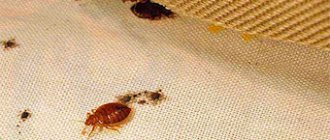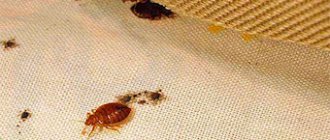A tick bite poses a danger not only to humans, but also to domestic cats. Parasites lie in wait not only in the forest. They can be found anywhere where tall grass grows: in a park, in a country house, and even in the city.
If you find a tick on a cat, you should remove it as soon as possible. It is better to go to the veterinarian, but this is not always possible. You can remove a tick from a cat at home, there is nothing complicated about it, just read the instructions and follow them step by step. The method of removing ticks from people and pets is not much different. The article describes the appearance of a tick to make it easier for you to distinguish it, and also provides advice on preventing the development of dangerous diseases in cats.
Why you need to remove ticks
There is no need to remove a tick from a cat. Firstly, it will fall off on its own when it is full. Secondly, the cat can pull it off itself when it itches. In both cases, there is a high risk of contracting dangerous diseases. When bitten, the tick releases saliva, which contains anesthetic substances. Because of them, the cat does not feel the bite. This saliva also contains microorganisms that cause dangerous diseases: piroplasmosis, tick-borne encephalitis, hemobartonellosis, tularemia, etc. The longer the tick is on the cat’s body, the more saliva with pathogens it manages to release, the greater the risk of infection.
In addition, if you pull out a tick alive, it can and should be immediately sent to the laboratory for testing. If it turns out that he was a carrier of diseases, you can immediately begin treatment for your pet.
If you do not remove a tick from a cat, the animal will most likely brush it off when scratching, tearing the body of the parasite. In this case, the head with the proboscis may remain under the skin. This will increase the risk of infection, and a lump with redness will appear at the site of the bite - this means that infection has begun. Since such a place cannot be detected immediately, an abscess will begin, which will have to be opened by a veterinarian.
What is the danger
Are ticks dangerous for cats or do they only bite dogs?
Many people doubt whether ticks bite cats and believe that this type of parasite does not affect them. It is a myth. Representatives of Ixodidae bite everyone. It’s just that dogs constantly visit the street and parasitic diseases are recorded more often in them.
The Ixodid tick is a small spider with a disk-shaped body, a small head and 8 legs (see photo).
Color – all shades of brown. Females drink more blood. If the parasite is hungry, its body is approximately 2-4 mm in size. But the gluttony is surprising. The body weight of females increases 80-120 times during feeding. When she drinks blood, she is able to swell into a ball up to 1.5 cm, and the color changes from brown to dirty gray.
The danger for cats lies in the ability of ixodids to be carriers of various serious diseases. The culprits of diseases are protozoan parasites and viruses that live in the body of an ectoparasite.
The consequences of a bite are manifested by such infectious diseases as:
- hemabartonellosis;
- borreliosis;
- theileriosis;
- piroplasmosis;
- babesiosis
Any parasitic disease does not develop immediately after a bite. Time must pass - on average 2-3 days, sometimes more.
How difficult the disease will be depends on a number of factors:
- the general well-being of the animal and the state of immunity;
- age;
- number of bitten bloodsuckers;
- timeliness of measures taken by the owner.
Pregnant cats and kittens are especially at risk. If an infection or virus enters the body of a pregnant animal, then the offspring will also be affected.
How to detect ticks on a cat
If your pet goes for walks outside, you need to carefully examine it after each walk. They can be found anywhere on a cat’s body: on the neck, stomach, groin, on the inside of the paws, on the ears – outside and inside.
Short-haired cats just need to be examined, long-haired cats need to be felt by parting the fur. In order not to miss even a small tick, you need to inspect it in good lighting. When ticks drink blood, they noticeably increase in size, so it is simply impossible not to see them.
Bite sites
Is it true that ticks love to live on oak trees and fall onto walking cats from tree branches?
It is wrong to think so. Ixodid ticks do not climb to a height of more than one and a half meters. The main habitat is grass, including dry grass and shrubs.
Even a completely domestic cat becomes a victim of the parasite if the owner brought it into the house on his clothes. An ectoparasite can hide for several days or even weeks and then bite a cat.
Fact: Ixodids tolerate drought, lack of food, and sharp drops in temperature because they can slow down their development at any stage. An adult can easily go without food for up to 2 years.
Parasites, having landed on an animal’s body, look for a place where the skin is thinner so that it is easier to bite through and where the animal cannot shake it off with its paw or reach with its tongue. The main weapon of a tick is a proboscis with jaws and tentacles. With its jaws it cuts the skin of the animal and attaches itself with them.
The most popular places are:
- withers;
- stomach;
- groin;
- armpit area;
- behind the ears.
On short hair, parasites are clearly visible, but long-haired cats need to be combed with a comb against the direction of hair growth. If a cat has been bitten by a tick, stroking it with the palm against the fur will help find it. A lump will be revealed to the touch.
How to remove ticks from a cat at home
If your cat is very worried about a tick bite, and if you can’t restrain it and calm it down, it’s better to go to the clinic. You need to act carefully, confidently and quickly. The problem with cats is that you can't get them to sit or lie still. It can be very difficult to cope alone. It is good to work together, so that one person holds the animal, and the second takes out the tick that has drunk blood.
Removing a tick is possible using improvised means. You need to prepare for the procedure:
- prepare a tool for removing ticks, scissors for cutting hair around the wound, a magnifying glass;
- prepare a container with a wet cotton pad and a lid in order to submit the tick to the laboratory;
- antiseptic for treating wounds (Medilis-ASEPT is suitable for these purposes. Skin antiseptic "Medilis-ASEPT" has been produced since 2015 and is officially registered as a medical disinfection product by Rospotrebnadzor and is a professional product, not a cosmetic product);
- Wash the hands. wear gloves, and if possible, protect your eyes with goggles, since if removal is unsuccessful, blood may spray out from the crushed parasite.
The cat must be calmed and, if necessary, swaddled if this does not interfere with removing the tick. It is advisable to trim the hair around the bite site so that it does not interfere with removal.
There is no need to give your cat any sedatives or pills.
How to remove a tick from a cat: step-by-step instructions
To remove a tick, you do not need to pull it out of the cat's body. The main rule to follow is: pick up an insect, turn it and pull it out with a twisting motion.
There are several ways to remove ticks at home:
- With a thread. They make a lasso-type loop out of it, throw it over the pest, tighten it, but not too much, and then pull it out, unwinding it from side to side or twisting it counterclockwise.
- With tweezers. They grab the tick as close to the cat's skin as possible, while it is better to hold the tweezers parallel to the skin, without squeezing the body too tightly so as not to tear it.
- With a syringe. The head of a small syringe is cut off and placed against the skin so that the tick is inside. Pull out the piston, creating a vacuum. The tick should be pulled out of the skin under pressure. This method is quite dubious, since the pressure may not be enough to pull out the insect, and it will go even deeper under the skin.
- A twister. This is a special device that is sold in pharmacies. It looks like a small nail puller, which is used to pick up the parasite and twist it out of the pet’s body. The device is made taking into account the anatomical features of the tick, so there is no risk of crushing or tearing it.
When removing ticks using any of the above methods, the most important thing is not to tear the parasite. It is quite easy to crush and separate the head from the body. If the head of the tick remains under the cat's skin, it should be removed.
The most convenient tool is a twister. They come in two sizes - for small ticks that have not yet had time to increase in size, and for large ones that have sucked blood. The tick is fixed between the teeth of the twister, so it won’t go anywhere. However, it cannot be crushed. It is turned with a handle around its axis, so that it unclenches its jaws and comes out of the wound entirely.
Diagnosis of otodecosis
Even if there are seemingly obvious signs of ear mites, the cat should be shown to a veterinarian. Similar symptoms may appear with dermatoses, lichen, fungal and bacterial infections. In addition, there is another type of external microscopic parasite that lives on the ears of cats. Therefore, before starting treatment, a diagnosis is required.
The diagnosis is made based on examination and microscopic examination of scrapings from the surface of the auricle. Under a microscope, the doctor will quickly identify the parasite and prescribe appropriate treatment.
If laboratory diagnostics are not possible, you can try the home method. To do this you will need a black sheet of paper and a magnifying glass. You need to take a little discharge from the inner surface of your pet’s ear and smear it on paper. If there is a parasite, then on the leaf it looks like a moving whitish dot.
What not to do
After tick bites, you should never remove them in the following ways:
- cauterize;
- fill with oil;
- pour with gasoline, turpentine, vinegar, and other liquids.
It is believed that when poured with oil, the tick will begin to suffocate and crawl out on its own. But that's not true. It can go even further under the skin. Cauterization can injure your pet. When poured with caustic liquids, the tick will die, but during its agony it will squirt even more infected saliva into the wound. In addition, these fluids will get into the wound and cause suffering to the cat.
You should also not simply pull the tick out with your fingers. Firstly, it is so easy to crush it. Secondly, when crushed or torn, drops of infected blood can fall on a person. And if there are microtraumas on the fingers, then you can get infected. When you pull, you will likely tear the insect apart, leaving the head underneath the skin.
What to do after deletion
After removing the tick from the cat's body, it is necessary to treat the wound. A variety of antiseptics are suitable for this. You can take what you have on hand: brilliant green, iodine, chlorhexidine, alcohol, hydrogen peroxide. Please note that iodine is not applied directly to the wound, but is treated around the bite site.
If after removal the tick remains alive, it is placed in a container and taken to the laboratory for analysis. This must be done within two days after removal.
If you do not want or cannot send it for research, then the parasite must be destroyed, but this must be done carefully so that its particles do not fall on anyone.
The cat should be monitored for approximately two weeks after the bite. During this time, symptoms of the disease may appear. If an animal refuses to eat, becomes lethargic or restless, strange movements appear, or orientation is disturbed, this is a reason to contact a veterinarian. Symptoms of infection also include fever and vomiting.
Concomitant therapy
When treating ear mites, you need to keep in mind that the parasite can spread to the cat’s body, so in parallel with treating the ears, antiparasitic procedures for the whole body should be carried out. To do this, just apply a few drops of a special preparation to the pet’s scruff or treat it with a spray. Among the sprays, the most popular are Frontline and Cyodrin. It is imperative to ensure that the animal does not lick its fur for a certain period of time.
You should also take care of your furry pet’s immune system. The stronger the immune system, the faster the recovery, and the greater the chance of avoiding re-infection. A cat's diet should contain a large amount of vitamins and be varied. You can add ready-made vitamin complexes to the food. It is also recommended to carry out a course of therapy with drugs that enhance the body’s defenses - Gamavit, Tentravit.
Prevention
Unfortunately, there is no effective prevention to protect cats from ticks. They are not vaccinated. Treating them with repellents before each walk is ineffective; besides, the cat will lick off any products applied to the fur, and this is dangerous.
You can wear a special collar that protects against ticks and other parasites, or acaricidal drops on the withers.
If a cat has limited time walking in a garden plot near a dacha or private house, it is advisable to treat it against ticks. For this you can use, for example, Medilis-Ziper concentrate. A working solution is prepared from it, which is poured into spraying equipment and the surface is treated with grass, shrubs up to 50 cm in height. It is necessary to strictly follow the instructions when preparing the solution and treating the area, and be sure to use personal protective equipment. One treatment is enough for 1 – 1.5 months. All this will protect not only your beloved cat, but also people from tick attacks. Insects will not come to the treated area.











